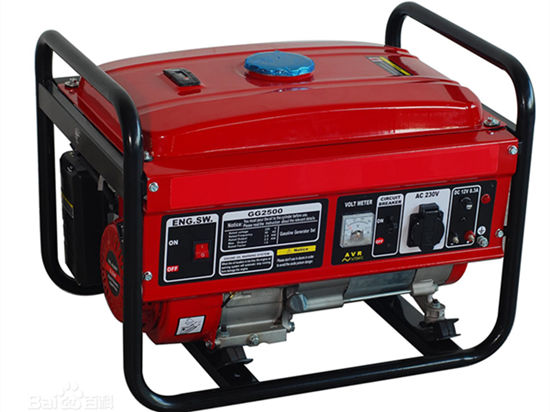In daily life, the lack of power supply has brought a lot of inconvenience to our production and life. It is a good solution to use the backup power supply. The generator set as the backup power source can choose diesel generator, gasoline generator or natural gas generator set. When choosing a home generator, which fuel generator should we choose?
Different types of fuel have many advantages and disadvantages. Almost all generator fuel types are gasoline, diesel, natural gas or propane.
Diesel Generator
Advantages:
Fuel economy, high thermal efficiency, when the working conditions change, the change of fuel consumption rate curve is relatively flat, and it is also economical under low load.
Reliable and durable
Wide range of use
Generator fire safety is good
The most non-flammable source of fuel
Very easy to get it
Fuel delivery on site
Disadvantages:
18-24 months warranty
The installation of large fuel storage tank increased the cost of the system.
Large volume, heavy duty, and loud noise
Diesel generator power range is from 5 kw to 3000 kw. Generator can be single phase generator or three phase generator. No matter it is small power or heavy duty diesel generator, it can be made into silent type generator. Frequency can be 50Hz or 60Hz. Diesel generator price is determined by the power, type and brand of the generator.
Gasoline Generator
Advantages:
Common fuel source
Small-size generator, easy to carry
Disadvantages:
Highly flammable
Short shelf life (About 12 months)
It's dangerous to store a lot of it. (Gasoline)
Low efficiency

Natural Gas Generator
The gas generator set is a new type of generator set developed to meet the world's environmental protection requirements and the new market environment. Natural gas generator sets are mainly divided into two types, one is a combined cycle gas turbine, and the other is a gas internal combustion engine. The gas turbine is relatively large, mainly used in large and medium-sized power stations. The gas internal combustion engine is relatively small, mainly used in small distributed power plants. It is a new type of green environmental protection power to replace fuel and coal-fired units.
Gas generators make full use of various natural gas or harmful gas as fuel, turning waste into treasure, safe and convenient operation, high cost efficiency, low emission pollution, and suitable for heat and electricity cogeneration.
Advantages:
Unlimited fuel source
Clean combustion
Low emission pollution
Noise vibration is lower than diesel generator
Good starting performance, stable operation
Output power range is wide
Disadvantages:
Fuel system piping installation cost is higher
Limited areas of use
Propane
Advantages:
Long shelf life
Clean fuel
Disadvantages:
Inflammable gas
The fuel system is more complicated
Pipe installation cost is higher
High cost
Compared with gasoline generator, diesel generator has the characteristics of high power, long life and good power performance. The greenhouse effect of emissions is 45% lower than gasoline, carbon monoxide and hydrocarbon emission is also low.
In general, diesel generator is relatively large-scale mechanical equipment, mainly used as emergency backup power, widely used in mining engineering, road construction, commercial buildings, banks, hospitals, emergency shelters, construction sites and other places.
If the home generator is mainly used for home lighting, then the choice of gasoline generator is more suitable, low cost, low noise, low power, and easy to carry. If it is used for home irrigation, or for farming, it is recommended to choose a diesel generator, which is powerful, and its performance can better meet your actual needs.
Maintenance method of gasoline generator
After the new generator or the sealed generator has been run-in (the first 50 hours), the following maintenance work is required:
1. Clean or replace air filter
2. Replace engine oil
3. Replace or wash the filter element of the lube filter
4. Re-tighten all parts of the bolts and nuts
The new generator should avoid sudden increase of load or high-speed operation. Use lubricating oil recommended by the manufacturer as much as possible. Do not mix lubricating oil of different grades. Lubricants contain various additives. Lubricating oil of different grades will reduce the lubrication performance after mixing, resulting in abnormal wear of moving parts.
Note: The following checks should be made before each use of the gasoline generator to ensure safe and normal use of the generator.
Daily maintenance
1. If the generator is not used for a long time (more than one month), the battery will lose power due to self-discharge. Please use an external charger to charge the battery.
2. Check if there is enough gasoline in the tank.
3. Check the oil circuit switch and the oil pipeline for oil leakage.
4. Check if the starting battery voltage is above 12V and observe if the battery is damaged.
5. Observe the oil quality and determine if it needs to be replaced.
6. Check if the oil level is between the oil gauge grid.
Comments
Post a Comment